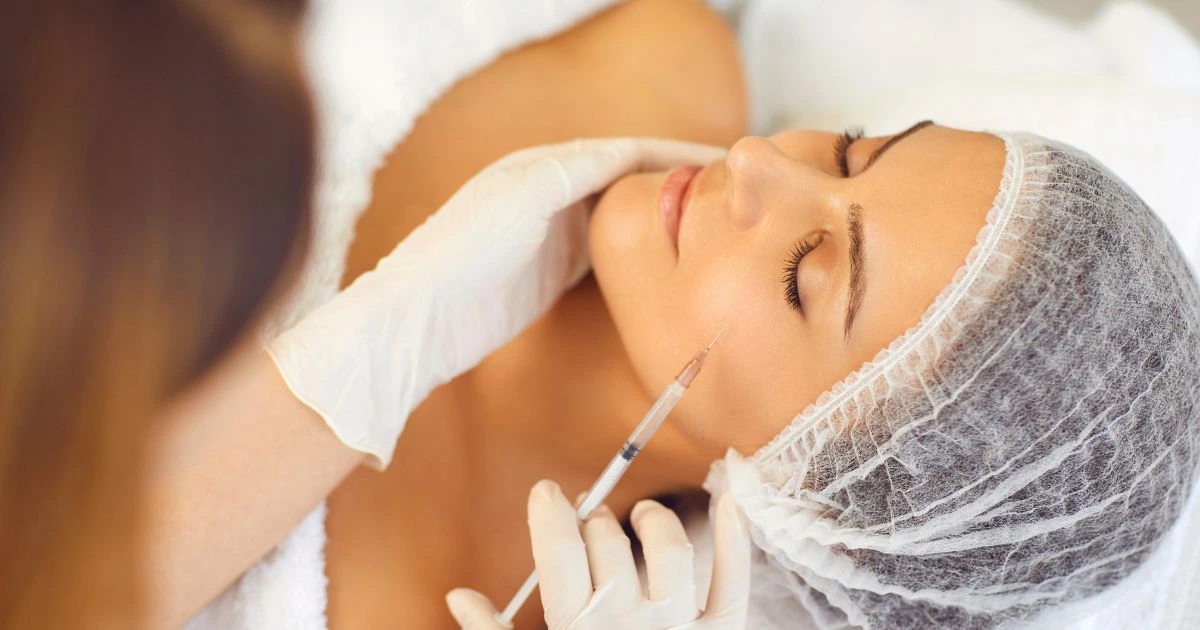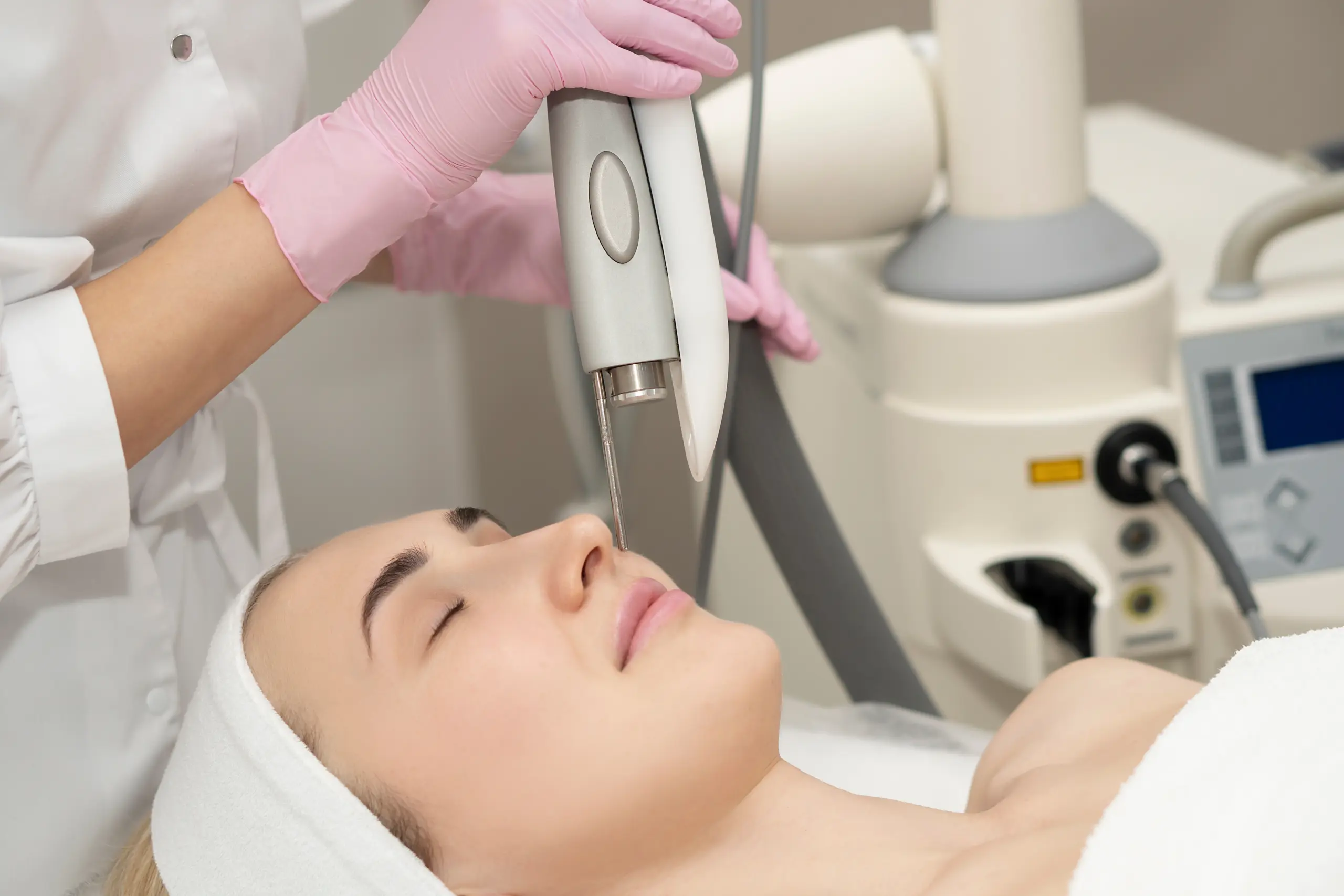Table of Contents
As women transition through menopause, symptoms such as hot flashes, night sweats, mood changes, and sudden drops in energy can significantly affect daily life. These changes often lead many to explore hormone replacement therapy (HRT) as a potential solution.
Hormones influence nearly every aspect of well-being (from sleep and metabolism to cognitive function and sexual health), so when levels begin to fluctuate, the effects can be widespread.
The reputation of HRT has evolved over the years. Once considered a cornerstone of menopausal care, it came under intense scrutiny after the early 2000s Women’s Health Initiative (WHI) study raised concerns about potential risks.
In recent years, however, new evidence has prompted a reexamination of those findings. The U.S. Food and Drug Administration (FDA) is now reviewing whether the long-standing “black box” warning on estrogen therapies still reflects current science.
Understanding this shift is key to making informed choices about women’s health and hormone care.
What We Mean by HRT
Hormone replacement therapy (sometimes called menopausal hormone therapy) typically involves giving estrogen to relieve menopausal symptoms, preserve bone health, or support vaginal health.
Some formulations deliver hormones systemically (pills, patches, gels), others locally (e.g., vaginal creams, rings). In some cases, it also involves combining with a progestogen, which is a synthetic progesterone.
Because the effects depend heavily on which hormones, what dose, what route, and when started, it’s impossible to speak of a single “HRT safety” for all women.
A Short History: Why the Black Box Warning Exists
In 2002, the Women’s Health Initiative (WHI) published results suggesting that estrogen + progestin therapy in postmenopausal women might increase risks of breast cancer, strokes, and blood clots.
Those findings terrified the medical world and the public. The result: HRT use plummeted, and the FDA instituted a black box warning on estrogen-containing products, pointing out potential risks like cardiovascular disease, cancer, and dementia. A black box warning is the agency’s most serious warning.
Over time, further analysis revealed that the WHI results were based on older women, many years past menopause, using fairly high doses and specific drug regimens. The medical community has come to see that the black box warning, as originally conceived, may be too blunt, casting a broad shadow over therapies whose risk profiles vary widely.
Thus, when the FDA convened an expert panel in 2025 to reconsider the warnings, many saw it as overdue.
What the Evidence Tells Us About Risk & Safety
Here’s what studies and expert opinion suggest always bearing in mind that “risk” is not zero, and what’s safe for one woman may not be for another.
Key Risks
- Blood clots (Venous thromboembolism, VTE): Estrogen (especially oral) has been linked to an increased risk of deep vein thrombosis (DVT) and pulmonary embolism. This is one of the more consistent and worrisome safety signals.
- Stroke / cardiovascular events: The WHI flagged an increased stroke risk. Later analyses and subgroup studies suggest that women who start estrogen therapy closer to menopause (e.g., within 10 years) might have lower cardiovascular risk than older women many years post-menopause.
- Breast cancer: Many observational and trial-based studies have shown a small but increased risk of breast cancer associated with combined estrogen + progestogen therapy over time. However, the degree of risk depends heavily on which progestogen is used, dose, duration, and individual risk factors (family history, genetics).
Other risks
- Gallbladder disease (especially with oral estrogen)
- Potential cognitive or neurological effects in older women (though data are mixed)
- Bleeding or endometrial changes in women who still have a uterus (if not using progestogen appropriately)
Modifiers That Matter
- Timing (when therapy starts relative to menopause): Many experts believe starting HRT “early” (within ~10 years of menopause, or before age ~60) carries lower risk and possibly more benefit.
- Route & formulation: Transdermal estrogen (patch, gel) may carry lower clotting risk than oral estrogen because it bypasses first-pass metabolism in the liver. Low-dose vaginal estrogen (for local symptoms) has minimal systemic absorption and is widely considered safer.
- Dose & duration: Lower doses and shorter durations tend to reduce risk.
- Patient characteristics / baseline risk: A woman’s age, cardiovascular health, smoking status, clotting history, family history of cancer, and other comorbidities all influence whether HRT is relatively safe or not.
What Removing the Black Box Could (and Couldn’t) Mean
If the FDA ultimately removes or revises the black box warning (especially for vaginal estrogen), here’s what we might see:
Potential Benefits
- Less fear and confusion for women reading the label, especially for low-dose vaginal therapies.
- More physicians may feel comfortable prescribing vaginal estrogen, improving treatment access for symptoms like dryness, pain with sex, and recurrent urinary infections.
- More nuanced labeling could allow differentiation between systemic and local therapy, better reflecting modern evidence.
What It Won’t Mean (or Shouldn’t Mean)
- It doesn’t mean estrogen therapy is without risk. Systemic HRT (especially in older women or those with comorbidities) still needs careful judgment.
- You’d still need a personalized assessment. This should cover your age, health history, risk factors, and benefits desired.
- The change is more likely for low-dose vaginal estrogen than for systemic therapies; revising the systemic therapy warning is more complex, given the broader risk profile.
The Bigger Picture: HRT Safety Is About Personalization
What’s now clear is that HRT safety depends on you: your age, your medical history, your goals, and your body’s response. For many healthy women in early menopause, the benefits (better sleep, energy, focus, libido, and bone health) outweigh the risks.
That’s why the medical community is shifting toward personalized hormone therapy. This means testing, tailoring, and monitoring treatment rather than applying blanket rules.
Hydra Prime’s Hormone Therapy in Miami Lakes, FL
Let’s be real if you’ve been feeling off lately, it’s not just in your head.
At Hydra Prime Aesthetics & Wellness in Miami Lakes, FL, hormone care goes far beyond simply prescribing estrogen or progesterone. Whether you’re perimenopausal and starting to notice changes, or fully menopausal and wondering if this is just “getting older,” Hydra Prime takes a deeper look.
Here’s what sets our approach apart:
- Comprehensive lab testing: Before recommending any therapy, they perform extensive lab panels to uncover what’s truly happening under the surface.
- Beyond estrogen and progesterone: Hydra Prime evaluates full-body health, including inflammation, thyroid balance, nutrient levels, and metabolic markers.
- Individualized care: Every treatment plan is built around your body’s data not generic “norms.”
Take control of your hormone health today.
Conclusion
HRT is not a monolithic therapy with one safety profile. Some forms and use strategies are relatively low-risk; others may carry significant risks. What matters are the details: which hormones, what dose, how they’re delivered, when therapy starts, and who’s using them.
If the FDA removes or revises the black box warning (especially for low-dose vaginal estrogen), it would be a step toward recalibrating public perception and aligning label language with modern evidence. But that won’t make HRT “risk-free,” nor remove the responsibility of clinicians and patients to weigh benefits and risks carefully.
For women considering HRT:
- Talk openly with your healthcare provider about your personal risks (cardiovascular, clotting, cancer, etc.)
- Ask about different formulations (oral vs. transdermal vs. vaginal) and whether a lower dose is viable.
- Revisit therapy regularly. Remember, the safest plan is often the lowest effective dose for the shortest period needed
- Keep informed as guidelines and regulatory language evolve.







